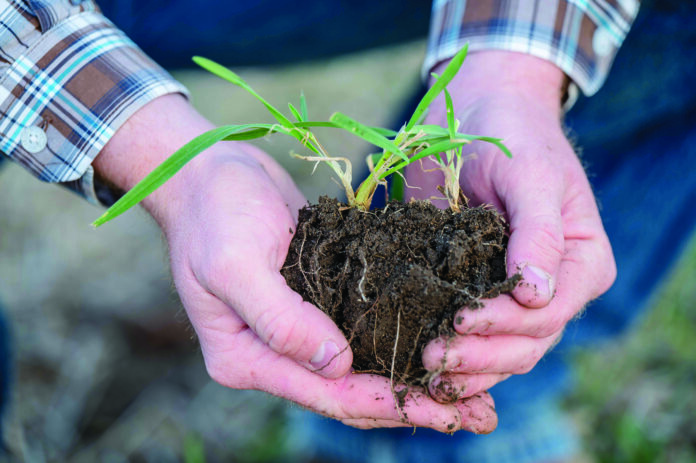
Iowans have heard a lot about fertilizer in recent years, as nitrogen and phosphorus are the two key nutrients the state is working to better manage through the Iowa Nutrient Reduction Strategy.
The NRS will be 10 years old this month. As that anniversary nears, it’s worth taking a closer look at these two vital nutrients and recognizing a decade defined by progress, partnerships, and momentum.
Nitrogen is one of earth’s most important elements and it plays a key role in plant growth. Phosphorus is important for plants to develop fruit and store carbohydrates. In water, both nutrients can cause growth of algae, which lowers oxygen levels when the algae die and decay.
Nitrogen numbers
Iowa’s farmland is among the most productive farmland in the world, in part because it is rich in nutrients and organic matter. According to Iowa State University, the average acre of Iowa farmland has 10,000 pounds of naturally occurring nitrogen, but most of that is locked up in soil organic matter. Only a small fraction of that nitrogen is released for plants to use in the spring – not enough for a corn crop. That’s why farmers often apply nitrogen fertilizer.
Nitrogen loss happens most often during rain events when crops are not vigorously growing. Many Iowa farmers are combatting that by planting cover crops like cereal rye. Rye scavenges for nitrogen and builds living roots in the ground to hold soil in place.
Iowa has the fastest increase in cover crop adoption in the country, according to USDA. The state went from 10,000 acres in 2009 to nearly 3 million acres today. The goal is 12-17 million acres.
When it comes to reducing nitrogen loss, we still have a long way to go, however we’re committed to the challenge. Iowa leads the nation in bioreactors, saturated buffers, and nutrient treatment wetlands – practices that were invented right here in Iowa – that are highly effective at reducing nitrogen loading.
Phosphorus goals nearly reached
The other target of the Iowa NRS is phosphorus. Farmers have made significant progress in controlling it — primarily by preventing soil erosion through practices like no-till, which is increasing in Iowa by about 600,000 acres per year. Additional strategies like fertilizer management, buffers, grassed waterways, terraces and conservation tillage are also growing on Iowa farms and reduce soil erosion and phosphorus loss.
According to models, we have nearly achieved the Iowa NRS goal of reducing phosphorus loading by 29%.
We’re confident that because of the unprecedented partnerships, investments, alignment, and momentum we have in place thanks to the Iowa NRS, we will be able to fully achieve the nonpoint phosphorus loss reduction goal within the next decade.




